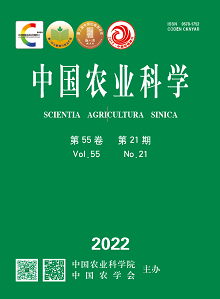【Objective】 The aim of this study was to explore the geographical characteristics of the mineral element content in Fuji apple peel and the feasibility of geographical origin tracing, to screen out effective discriminant indicators by combining multivariate statistical analysis, and to establish an origin tracing model, so as to realize Fuji apple geographical origin identification. 【Method】 The 124 Fuji apple samples were collected from the two main production areas in China, namely, the Bohai Bay production area and the Loess Plateau production area, which were taken as the research object. Inductively coupled plasma-mass spectrometry (ICP-MS) was applied to determine the contents of 31 mineral elements in the peel, including macroelements (Sodium (Na), Magnesium (Mg), Potassium (K), and Calcium (Ca)), microelements (Vanadium (V), Chromium (Cr), Manganese (Mn), Iron (Fe), Cobalt (Co), Nickel (Ni), Copper (Cu), Zinc (Zn), Arsenic (As), Molybdenum (Mo), Cadmium (Cd), Antimony (Sb), Barium (Ba), Lead (Pb), and Uranium (U)), and rare earth elements (Yttrium (Y), Lanthanum (La), Caesium (Ce), Praseodymium (Pr), Neodymium (Nd), Samarium (Sm), Europium (Eu), Gadolinium (Gd), Terbium (Tb), Dysprosium (Dy), Holmium (Ho), and Erbium (Er)). The independent samples t-test, principal component analysis (PCA), linear discriminant analysis, and orthogonal partial least squares discriminant analysis were conducted for geographical origin tracing. 【Result】 The mineral elements Mg, Ca, Na, Fe, Mn, Cu, Ba, Ni, Nd, Pb, V, Ce, Pr, La, Dy, U, Ho and Co in the peel samples from the Bohai Bay and Loess Plateau production areas were significantly different (P<0.05). The results of the PCA showed that the cumulative variance contribution rate of the 12 extracted principal components was 81%, which allowed the preliminary clustering of the samples from the two major production areas. After linear discriminant analysis, 10 mineral elements (Mg, Ca, Cr, Mn, Fe, Ni, Gd, Tb, Dy, and U) were screened as the ideal indicators to discriminate the geographical origin of Fuji apples in the two major production areas. The discriminant rate of the established discriminant model for the original whole was 92%, and the cross-validation discriminant rate was 89.5%. The orthogonal partial least squares discriminant analysis showed that five mineral elements, Co, Ba, Ho, Dy and Pr, played the key roles in the sample classification, and the accuracy of origin identification by the model could reach 98%, which realized the origin traceability of Fuji apples in the two production areas. 【Conclusion】 The peel of Fuji apple could be used as an effective site for origin tracing. The contents of rare earth elements Dy, Ho, Pr, Gd and Tb were important indicators for the geographical origin tracing of Fuji apples. This study provided a theoretical basis and technical support for Fuji apple origin tracing.









